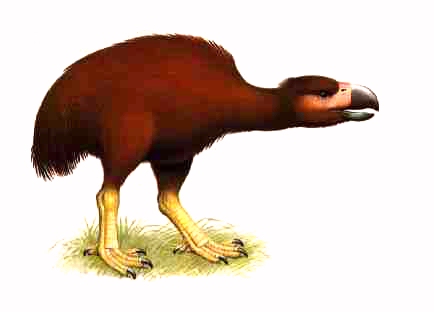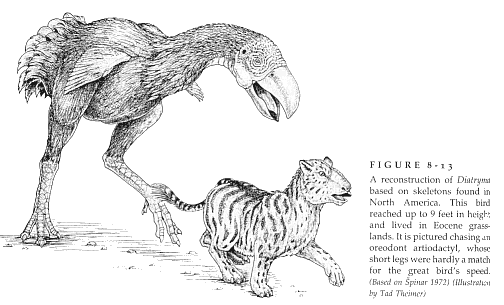

Diatrymas consist of four extinct species of large flightless birds. Fossils aged 55 to 65 million years (Paleocene to Eocene) have been found in North America, France, and Germany.
The birds stood over two metres tall, and had unusually large skulls in proportion to their bodies (nearly 50 cm long, including a beak over 20 cm long.) They weighed about 100 kg. Diatrymas bear a superficial resemblance to phorusrhacids, but there is not a close relationship.
There has been debate about whether diatrymas were carnivores or herbivores, using their large beaks for cracking nuts, as parrots do. Lawrence Wittmer and Kenneth Rose (1991) concluded from an analysis of the biomechanics of the jaw that the birds were carnivorous, hunting and eating small mammals.
